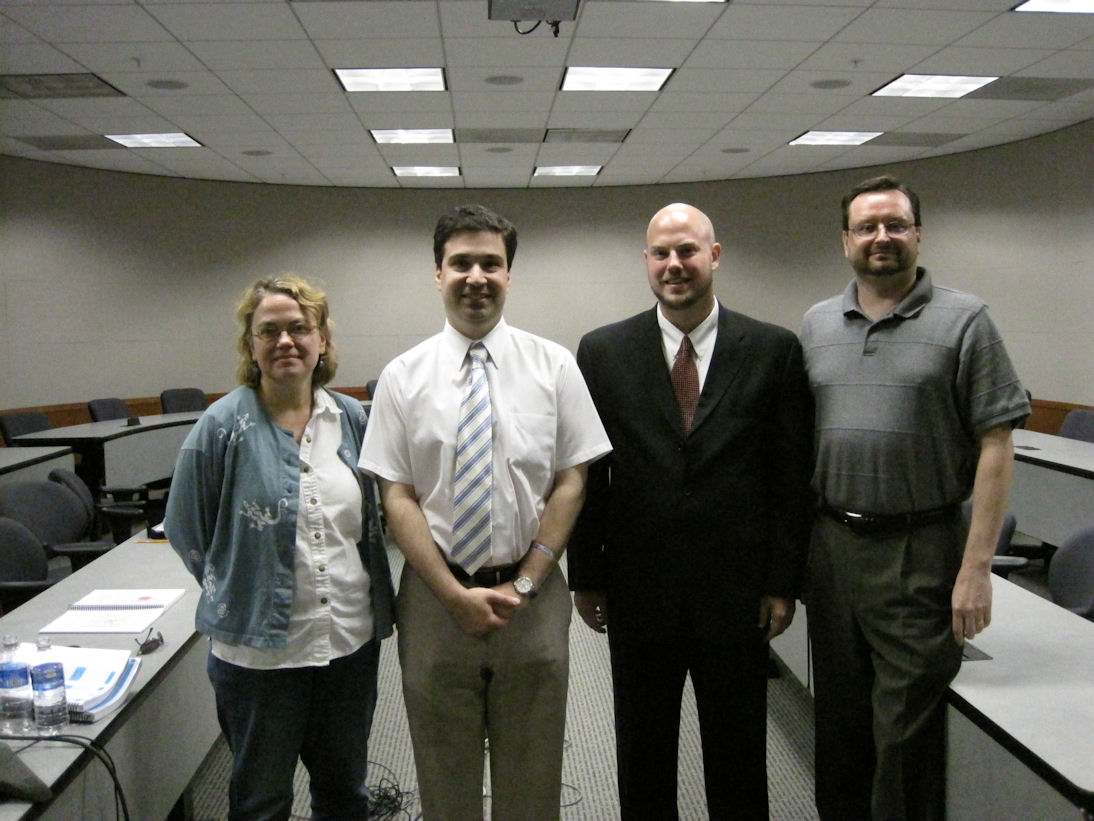Ryan Getek successfully defended his PhD dissertation on
Monday, August 30th, 2010. He had been working with me
on his PhD since Fall 2006. His thesis focused on adaptive
interfaces and usability and privacy issues. His thesis title is
A Usability Model for Web-Based Personalization Systems Based on Privacy and Security. Personalization approaches have become popular as content providers have attempted to provide features that differentiate their sites from the sites of competitors while enhancing usability. Personalization requires the acquisition of data that can be used to modify the content or presentation of the web page. The privacy and security issues related to acquiring this data carry significant concerns that affect the net benefit of the system to the user. Users have demonstrated that they often claim to be privacy conscious, but still provide information easily to sites on the Internet for widely varying levels of benefit in return.(Berendt, Gunther, & Spiekermann, 2005)
Personalization is becoming increasingly common. For instance, the Google toolbar has a browsing history feature that supports personalized search results and personalized news. The Gmail web-based email service searches user emails electronically in order to deliver personalized advertising. Additional personalization and customization features are also offered on sites such as Google News, MSN, and Yahoo!. For instance, MSN may collect data such as links clicked, search terms, the users a visitor interacts with, and location based on IP address for personalization.
These features require the collection, interpretation, and application of potentially sensitive user data. In order to better align the privacy preferences of users to actual practice, a multi-phased survey was conducted that measured user preferences for how data should be obtained, used, and shared by sites. The survey included real-world personalization scenarios in order to identify the conditions under which users provide information to a site to support a personalized experience. The data was analyzed with a variety of techniques including non-parametric analyses for differences and correlations, ordinal regression, and principal components analysis.
The results facilitated the development of a usability model and associated recommendations for how sites that implement personalization should handle data used to support personalization. This includes communication mechanisms such as privacy policies and the impact of privacy and security breaches. As part of this research, a conceptual model is presented that demonstrates the relationships between factors such as usability, privacy and security, and complexity of a personalized architecture.
 Huijuan (Jocelyn) Wu is from
Huijuan (Jocelyn) Wu is from  Huijuan (Jocelyn) Wu is from
Huijuan (Jocelyn) Wu is from 
